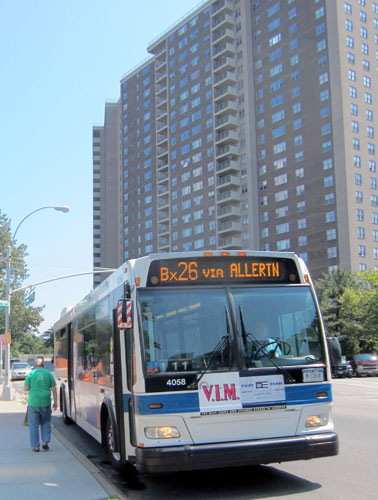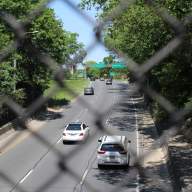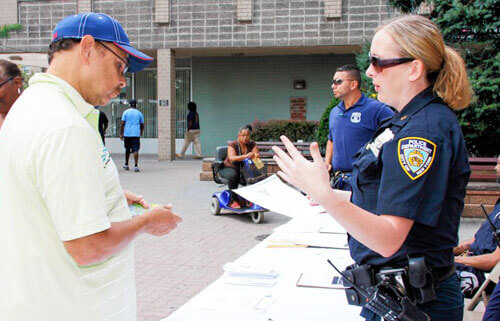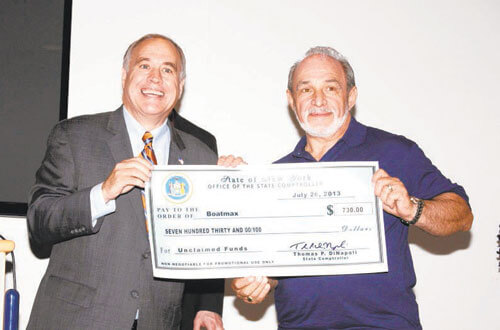With the Bay Plaza Mall expanding next to the towering Co-op City complex, the MTA is now mulling whether to restore bus cuts made three years ago.
Officials will spend the next five months to see if nine bus routes running along Co-op City need more buses, given the impending influx of shoppers heading to the new Macy’s mall at Bay Plaza.
It’s shopping annex is estimated to attract a high number of daily consumers to the mall, with another 1,700 employees working at the three-story mall.
Shoppers will have to compete for a seat with 55,000 riders living in Co-op City, already squeezed by service changes in 2010.
Community Board 10 requested the study last month, after hearing complaints from cooperators over lousy service, particularly with the Bx26 and Bx28 lines that connect riders directly to the No. 2 and 5 IRT subway lines.
“All aspects of bus service to Co-op City will be analyzed,” wrote Lois Tendler, the MTA’s VP of Government and Community Relations, in a response letter to Community Board 10. “Any necessary modifications will be implemented.”
Service did not always align, mainly during the late night hours, leaving some residents to wait an extra 45 minutes to get out of Co-op City.
“I wish they brought back the frequency,” said Susan Barnes, a regular Bx26 rider. “I find I have to run to catch the bus.”
Fellow commuter Davis Fredrena agreed.
“They need to put people on this bus to see how messed up this bus is,” she said, suggesting the MTA create a shuttle bus around Co-op City to ease the waiting time.
“We thought this was a good time, to strike while the iron was hot, to get the MTA to look at everything that’s going on,” said Ken Kearns, CB10 District Manager, thrilled to see the MTA react to their letter.
“We’re gratified the agency is moving forward in a collegial manner,” he said.
The cooperative is considered a naturally occuring retirement community (NORC), a site where a large cluster of elderly tenants resides. Because they’re either too sick or poor, many tenants rely on public transportation to get by.
The new Macy’s mall adds about 780,000-square-feet to the plaza, bringing the entire complex to 2-million-square-feet.
“The MTA would have to have their head buried in sand not to be able to see how much mass transit would play in serving Co-op City and the new mall,” said Assemblyman Mike Benedetto, who’s fought for years to restore bus service to locals.
The bus route reassessment is part of a larger effort by the city to ease future traffic tie-ups by mall visitors, encouraging them to take mass transit.
Along with a study to rework parts of the Hutchinson River Parkway, city agencies are also looking into ferry service for Co-op City.
The state legislature, meanwhile, will also take up the issue next year when it votes to build one of four Metro-North stations at Co-op City.
The goal there is to reduce traffic tie-ups in an already clogged section of the Bronx.
“What do you do when you have a regional mall and a gigantic housing complex?” asked Kearns. “You have to consider your reassessment pattern to be reconfigured.”
David Cruz can be reach via e-mail at DCruz@cnglocal.com or by phone at (718) 742-3383






















